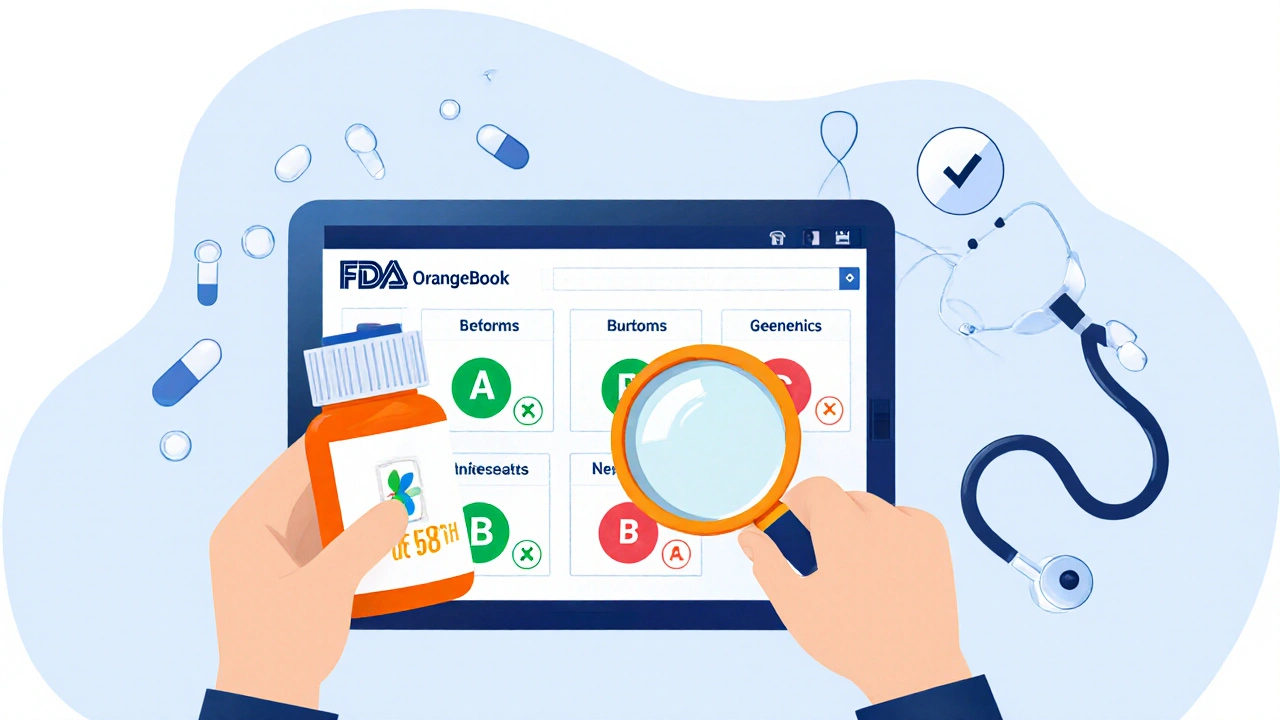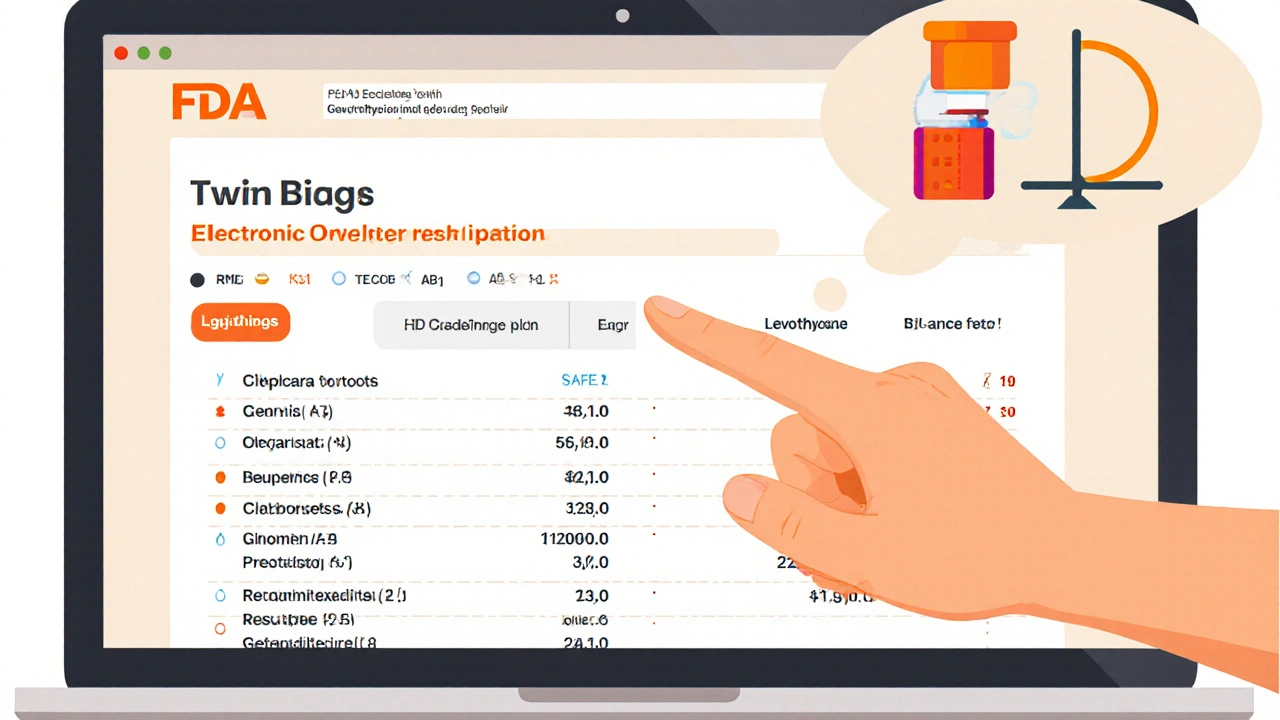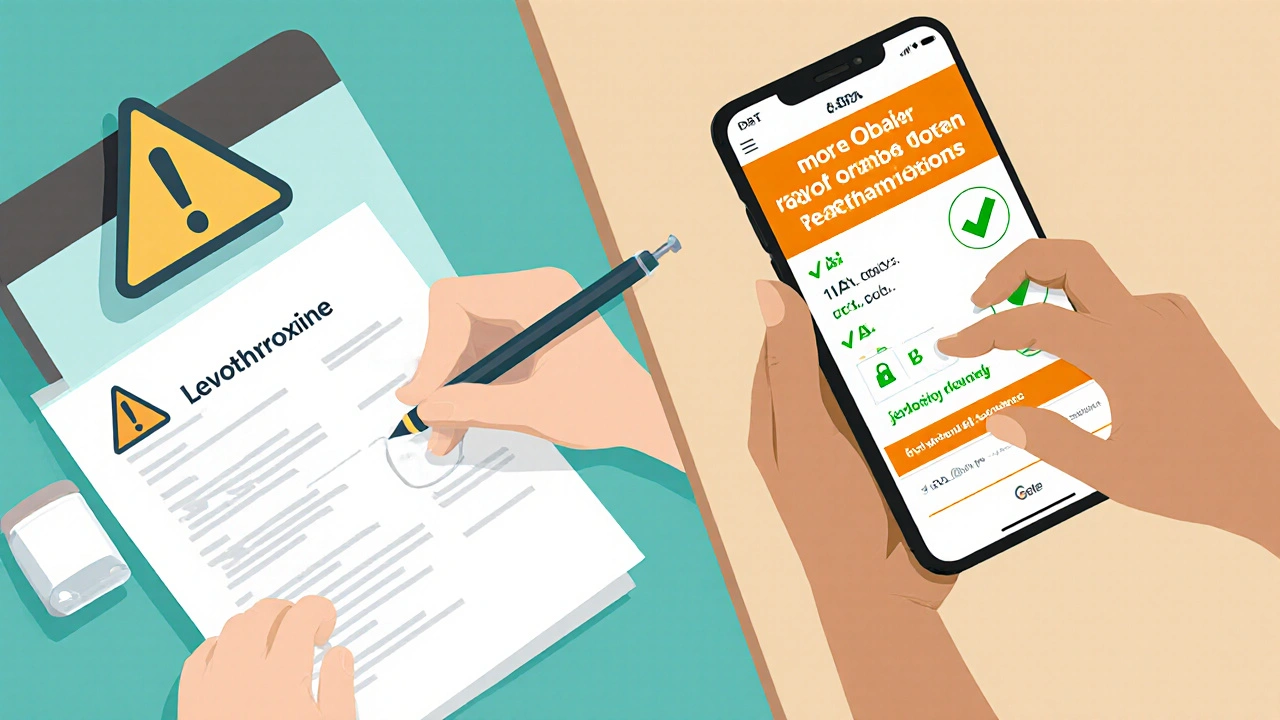
When a pharmacist hands you a generic pill instead of the brand-name drug your doctor prescribed, you might wonder: Is this really the same thing? The answer lies in the FDA’s Orange Book - a quiet but powerful tool that decides whether a generic drug can legally replace a brand-name one. It’s not just a list. It’s the official scorecard for drug equivalence in the U.S., and knowing how to read it can save you money, avoid confusion, and even prevent dangerous substitutions.
What Is the FDA Orange Book?
The FDA Orange Book - officially titled Approved Drug Products with Therapeutic Equivalence Evaluations - is the U.S. Food and Drug Administration’s official database of approved prescription drugs. First published in 1980, it became legally critical after the 1984 Hatch-Waxman Act, which created the modern pathway for generic drugs to enter the market. Today, it tracks over 16,000 approved drug products, including both brand-name and generic versions.
But here’s what most people miss: the Orange Book doesn’t just list drugs. It tells you which generics are therapeutically equivalent to their brand-name counterparts. That’s the key. Two drugs might have the same active ingredient, but if they’re not rated as equivalent, they’re not interchangeable. This rating is what pharmacists, insurers, and state laws rely on to decide whether a substitution is allowed.
How the FDA Determines Therapeutic Equivalence
The FDA doesn’t guess whether a generic works the same. It uses strict science. For a generic drug to be rated as therapeutically equivalent, it must meet five criteria:
- It’s approved as safe and effective
- It contains the same active ingredient, in the same strength and dosage form (pill, injection, etc.)
- It’s bioequivalent - meaning it releases the drug into your bloodstream at the same rate and amount as the brand
- It’s properly labeled
- It’s made under FDA-approved manufacturing standards
Only drugs that pass all five get a Therapeutic Equivalence (TE) code. The most common code is AB. That means the generic is considered interchangeable with the brand. If you see an AB rating, you can be confident the generic will work the same way in your body.
But not all generics are AB. Some are rated B. That means the FDA has identified a potential problem - maybe the drug doesn’t absorb the same way, or there’s inconsistent release. These aren’t necessarily unsafe, but they’re not approved for automatic substitution. And if you see codes like AB1, AB2, or AB3, that means there are multiple brand-name reference drugs for the same active ingredient, and the generic matches one specific version.
How to Search the Electronic Orange Book
The Orange Book is free and online. You don’t need a subscription. Go to the FDA’s Electronic Orange Book (the official site - don’t rely on third-party tools like Drugs.com, which can be 24-72 hours behind).
Here’s how to do a real verification step by step:
- Start by searching using the brand-name drug. For example, type in "Synthroid" - the brand for levothyroxine.
- Look at the results. Find the row where the "RLD" column says "Yes." That’s the Reference Listed Drug - the brand or original version the generics are compared to.
- Now scan the rest of the list. All the generic versions will have "No" in the RLD column. But look at the TE Code column. Are they marked AB? If yes, they’re approved as equivalent.
- Check the dosage form. Levothyroxine comes in tablets, capsules, and oral solutions. Each form is evaluated separately. A tablet rated AB doesn’t mean the capsule is.
- Confirm the strength. A 50 mcg tablet might be AB-rated, but the 88 mcg version might not be. Always match the exact dose.
Pro tip: Use the "Ingredient Search" if you’re unsure of the brand name. Search by the active ingredient - like "levothyroxine" - and then filter by dosage form and route (usually oral). This gives you the full list of all approved versions, branded and generic, in one place.

What the Orange Book Doesn’t Tell You
Even if a drug is rated AB, that doesn’t mean you can automatically swap it in every state. State laws vary. For example, levothyroxine (Synthroid) is AB-rated, but many states require a doctor’s permission before switching because it’s a narrow therapeutic index drug - small changes in dose can cause big effects. The Orange Book doesn’t flag this. You have to know your state’s pharmacy laws.
Also, the Orange Book only covers prescription drugs. Over-the-counter medicines like ibuprofen or omeprazole don’t get TE codes, even though many are available in generic forms. That’s because the FDA doesn’t evaluate them for therapeutic equivalence - they’re regulated under different rules.
And discontinued drugs? They’re not in the main list. You have to check the separate Discontinued Drug Product List. If a generic isn’t showing up in your search, it might have been pulled from the market.
Common Mistakes People Make
Even experienced pharmacists and patients get tripped up. Here are the top errors:
- Confusing patent expiration with market exclusivity. Just because a patent expired doesn’t mean a generic is approved. The Orange Book shows both, but they’re different things.
- Assuming all generics with the same active ingredient are interchangeable. They’re not. Different manufacturers may use different inactive ingredients, which can affect absorption - especially with drugs like seizure medications or blood thinners.
- Trusting third-party apps. Drugs.com, Medscape, and others pull data from the Orange Book - but they’re not real-time. The FDA updates daily. If you’re making a clinical decision, use the official source.
- Ignoring the TE code suffixes. AB1 and AB2 aren’t the same. They mean the generic matches a different brand reference drug. Mixing them up can lead to unintended substitutions.
The FDA says most people need 5-7 searches to get comfortable. Don’t rush it. Take your time. If you’re unsure, email [email protected]. They respond to 95% of questions within two business days.

Why This Matters for You
Generic drugs make up 90% of all prescriptions filled in the U.S., but they cost only 23% of what brand-name drugs do. That’s billions saved every year. But that savings only works if substitutions are safe and legal.
If you’re on a chronic medication - say, for high blood pressure, thyroid disease, or epilepsy - you want to know your generic is truly equivalent. A small difference in absorption can lead to a flare-up, a seizure, or a hospital visit. The Orange Book is your safety net.
And if you’re a patient, caregiver, or even a pharmacy tech, knowing how to read the Orange Book gives you power. You can ask your pharmacist: "Is this generic rated AB?" You can check the FDA site yourself before filling a prescription. You can spot an error before it happens.
What’s Next for the Orange Book?
The FDA is working to make the Orange Book smarter. By 2024, it’s expected to link with the Purple Book (which tracks biologics and biosimilars), and data will be available in machine-readable formats. That means apps and electronic health records will soon pull this info automatically - but for now, the manual search is still the gold standard.
For now, the best advice is simple: if you’re switching to a generic, verify the TE code. Don’t assume. Don’t guess. Look it up. It takes five minutes. And that five minutes could mean the difference between a safe, effective treatment - and a risky one.
What does an AB rating mean in the FDA Orange Book?
An AB rating means the FDA has determined the generic drug is therapeutically equivalent to the brand-name reference drug. It has the same active ingredient, strength, dosage form, and bioequivalence. This rating allows pharmacists to substitute the generic for the brand without needing a doctor’s approval, unless state law says otherwise.
Are all generic drugs listed in the Orange Book?
No. Only prescription drugs with FDA-approved therapeutic equivalence ratings are listed. Over-the-counter (OTC) medications, discontinued products, and drugs without a reference listed drug are not included in the main therapeutic equivalence section. Discontinued products appear in a separate list.
Can I trust third-party websites like Drugs.com for Orange Book data?
Not for critical decisions. Third-party sites pull data from the FDA, but they can be 24 to 72 hours behind. The Electronic Orange Book is updated daily. If you’re verifying a substitution for a high-risk drug like warfarin or levothyroxine, always use the official FDA site to ensure you’re seeing the most current rating.
Why do some AB-rated generics still require a doctor’s note to switch?
State laws can override the FDA’s rating. Even if a drug is AB-rated, some states require physician authorization for substitution - especially for narrow therapeutic index drugs like levothyroxine, digoxin, or phenytoin. The Orange Book doesn’t show these state restrictions. You need to check your state’s pharmacy board rules separately.
What’s the difference between AB1 and AB2 ratings?
AB1, AB2, and so on indicate which specific brand-name drug the generic matches. Some active ingredients have more than one reference listed drug (RLD). For example, there may be two different brands of a drug approved at different times. Generics are rated AB1 if they match the first RLD, AB2 if they match the second. Substituting between AB1 and AB2 generics isn’t automatically allowed - they’re not interchangeable with each other, only with their specific RLD.
How often is the Orange Book updated?
The Electronic Orange Book is updated daily with new approvals, withdrawals, and code changes. Major revisions - like new TE codes or patent updates - are published monthly. Always check the "Last Updated" date on the site to confirm you’re viewing the most current information.
What should I do if I can’t find a drug in the Orange Book?
First, check the Discontinued Drug Product List. If it’s not there, the drug may be an OTC product, which doesn’t have a therapeutic equivalence rating. If it’s a prescription drug and still missing, contact the FDA at [email protected]. It could be a data delay, or the drug may not yet have received an AB rating.

Post A Comment